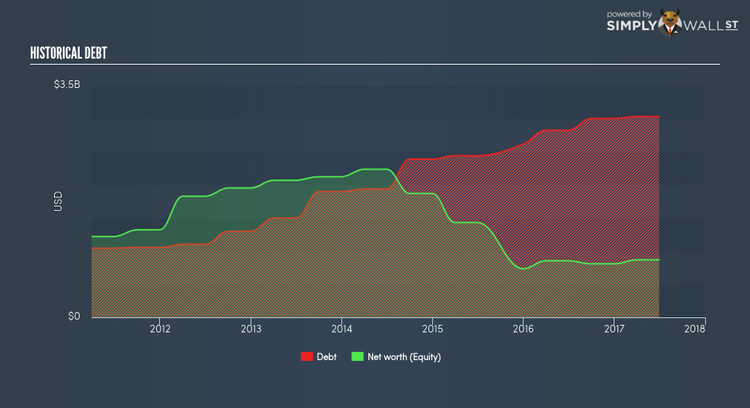How Financially Strong Is Premier Oil plc (LON:PMO)?

Premier Oil plc (LSE:PMO) is a small-cap stock with a market capitalization of UK£540.81M. While investors primarily focus on the growth potential and competitive landscape of the small-cap companies, they end up ignoring a key aspect, which could be the biggest threat to its existence: its financial health. Why is it important? Oil and Gas companies, even ones that are profitable, are inclined towards being higher risk. So, understanding the company’s financial health becomes essential. I believe these basic checks tell most of the story you need to know. Though, given that I have not delve into the company-specifics, I’d encourage you to dig deeper yourself into PMO here.
Does PMO generate an acceptable amount of cash through operations?
PMO has built up its total debt levels in the last twelve months, from US$2.62B to US$3.00B – this includes both the current and long-term debt. With this growth in debt, PMO currently has US$261.00M remaining in cash and short-term investments for investing into the business. Moreover, PMO has produced cash from operations of US$431.40M over the same time period, leading to an operating cash to total debt ratio of 14.36%, indicating that PMO’s debt is not appropriately covered by operating cash. This ratio can also be a sign of operational efficiency as an alternative to return on assets. In PMO’s case, it is able to generate 0.14x cash from its debt capital.
Does PMO’s liquid assets cover its short-term commitments?
With current liabilities at US$826.20M, the company is not able to meet these obligations given the level of current assets of US$628.20M, with a current ratio of 0.76x below the prudent level of 3x.
Does PMO face the risk of succumbing to its debt-load?
With total debt exceeding equities, PMO is considered a highly levered company. This is not unusual for small-caps as debt tends to be a cheaper and faster source of funding for some businesses. We can check to see whether PMO is able to meet its debt obligations by looking at the net interest coverage ratio. A company generating earnings before interest and tax (EBIT) at least three times its net interest payments is considered financially sound. In PMO’s, case, the ratio of 1.1x suggests that interest is not strongly covered, which means that lenders may be more reluctant to lend out more funding as PMO’s low interest coverage already puts the company at higher risk of default.
Next Steps:
PMO’s high debt levels is not met with high cash flow coverage. This leaves room for improvement in terms of debt management and operational efficiency. In addition to this, its low liquidity raises concerns over whether current asset management practices are properly implemented for the small-cap. This is only a rough assessment of financial health, and I’m sure PMO has company-specific issues impacting its capital structure decisions. I suggest you continue to research Premier Oil to get a more holistic view of the stock by looking at the areas below. Just a heads up – to access some parts of the Simply Wall St research tool you might be asked to create a free account, but it takes just one click and the information they provide is definitely worth it in my opinion.
1. Future Outlook: What are well-informed industry analysts predicting for PMO’s future growth? Take a look at this free research report of analyst consensus for PMO’s outlook.
2. Valuation: What is PMO worth today? Is the stock undervalued, even when its growth outlook is factored into its intrinsic value? The intrinsic value infographic in this free research report helps visualize whether PMO is currently mispriced by the market.
3. Other High-Performing Stocks: Are there other stocks that provide better prospects with proven track records? Explore a free list of these great stocks here.
To help readers see pass the short term volatility of the financial market, we aim to bring you a long-term focused research analysis purely driven by fundamental data. Note that our analysis does not factor in the latest price sensitive company announcements.
The author is an independent contributor and at the time of publication had no position in the stocks mentioned.

